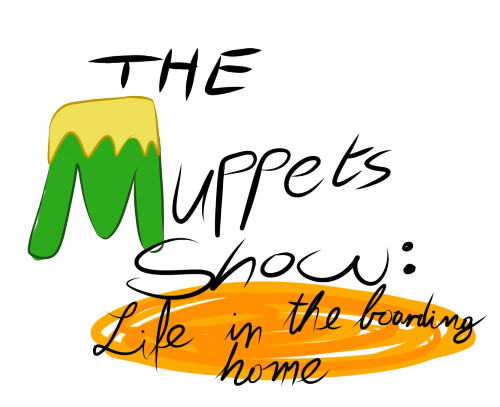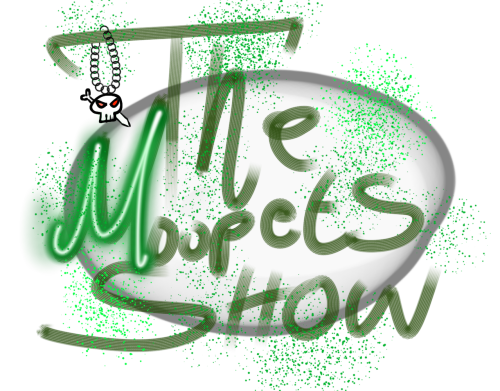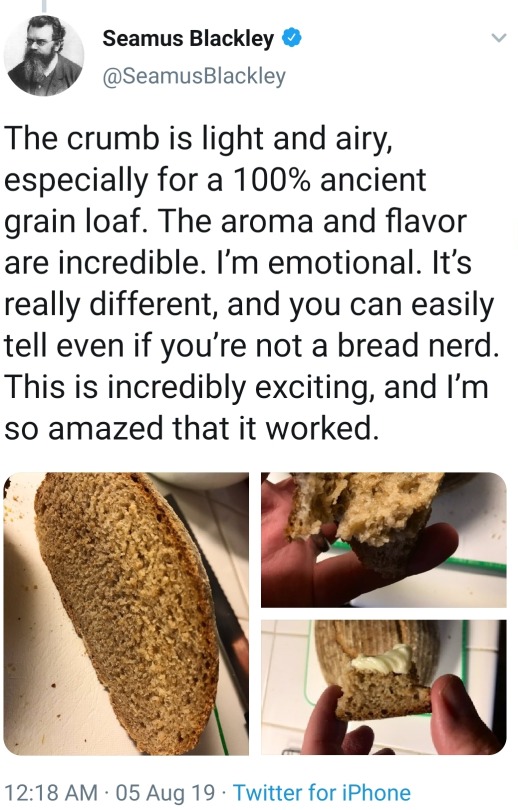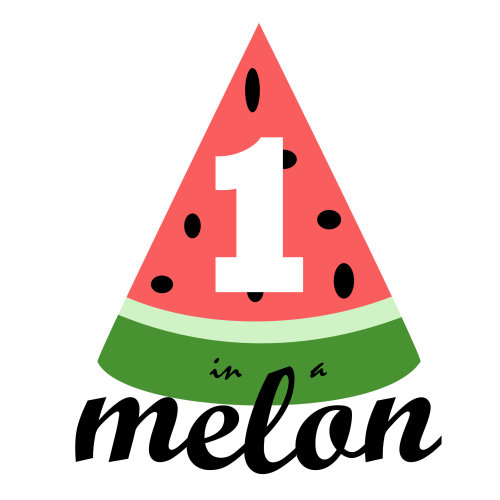Logos - Tumblr Posts





The logos for the main muppets show and the other four counterparts logos 💚💚🧡💜❤️
Sooo... I'll maybe post the pilot episode of "TMS:LITBH", but, lemme first explain somethin'! =^.^=
So, the moopets, whatnots, teppums, and parodies (and soon the new sunbles) appear in "TMS:LITBH" as the supporting characters, and the moopets as antagonists, but they all also have their own show like the muppets in "TMS:LITBH", but they're mostly a series of shorts similar to Looney tunes =^_^= 💚🧡💜❤️
And this is even for Aaliyah @ducktopia90264 since I know she likes my moopets, whatnots, teppums, but especially the parodies =^_^=
I hope y'all will like this, I'll even make the full "co3k:bttS!" Logo and all the other class of 3000 AUs and series logos, along with class of 4000 =^/////^= 💚🧡💜❤️
Oh! And I'll soon post again the "sunny toons productions" logo, and the mascot of it.... ^/////^





The logos for the main muppets show and the other four counterparts logos 💚💚🧡💜❤️
Sooo... I'll maybe post the pilot episode of "TMS:LITBH", but, lemme first explain somethin'! =^.^=
So, the moopets, whatnots, teppums, and parodies (and soon the new sunbles) appear in "TMS:LITBH" as the supporting characters, and the moopets as antagonists, but they all also have their own show like the muppets in "TMS:LITBH", but they're mostly a series of shorts similar to Looney tunes =^_^= 💚🧡💜❤️
And this is even for Aaliyah @ducktopia90264 since I know she likes my moopets, whatnots, teppums, but especially the parodies =^_^=
I hope y'all will like this, I'll even make the full "co3k:bttS!" Logo and all the other class of 3000 AUs and series logos, along with class of 4000 =^/////^= 💚🧡💜❤️
Oh! And I'll soon post again the "sunny toons productions" logo, and the mascot of it.... ^/////^
The Phantom, Chapter 1
The Debate
The sides were all in the mindscape now, even in Deceit, who had gone out to get himself some ice cream. They all highly doubted that he was doing that, considering he had been gone for the past week. But, hey, at least Thomas hadn’t been lying.
“What was so important that you had to yank me back into the mindscape?” He growled from where he was hanging upside down from the hanging light on the ceiling. Patton sighed up at him.
“Deceit, please come down from there.” “No.”
Logan rubbed his forehead. “Deceit, this is serious. Thomas’s neighbor might-”
“-be a freaking psychopath?!” Virgil exploded as he leapt from the couch.
“Geez, this must be important.” Deceit snorted. “I think that’s the first time I’ve ever heard you yelling.”
“Have you been around him when Thomas is at a party.” Roman deadpanned.
“Everyone, focus!” Patton said. “This is serious! Deceit,” he looked at the side, “Thomas has a neighbor. His name is Nathan, and he’s really nice! But, when Thomas went over to give him cookies-”
“You made him cookies?” Deceit said flatly. Patton bristled.
“LET ME TALK.”
Deceit actually shut up.
“Virgil was out, just in case he had his own sides that we could meet!” Patton went on. “Well, no one showed up for a long time. Thomas and Nate were talking, eating the cookies, Nate was being such a real gentleman and he was being so kind and Thomas invited him over for dinner- shut up Deceit- but then Virgil saw him!”
Virgil jumped into the conversation, explaining the man he had seen quickly and the darkness that he had felt coming off of him. ‘”Excuse me,” Deceit said, sounding very, very offended. “Did you just say that he was more scary then me?”
“It’s not an impossible feat, Deceit.” Logan said flatly.
“Guys, please!” Patton said. “If that’s Nate’s main side, what kind of person is Nate?!”
“Maybe he’s a sweet guy! He might not be evil!” Roman said.
“You’re just defending him because you think he’s cute!” Virgil shouted angrily.
“Well mayBE! Is that a crime?!” Roman growled.
“It is if he ends up hurting Thomas!”
“Guys, we have to remain calm!” Patton said.
“Remain calm?!” Virgil squeaked. “Thomas is having him over for dinner! DINNER! What if he tries to kill him?! Or have HIM for dinner?!”
“You’ve watched too many horror films.” Deceit said blandly. Virgil glared at him.
“That’s because you keep telling Thomas that ‘this one won’t be as scary!’“
“Maybe that wasn’t even his main side!” Roman said, pulling the conversation back to the problem at hand. “Virgil isn’t Thomas’s main side but he was still out.” Deceit glanced at Patton, who sighed.
“No, kiddo... That was his main side alright...” He muttered, before he looked over towards the armchair. “Logan,. what-” He stopped and blinked as he saw that Logan was gone.
“Well, maybe he just stands for something that’s bad like Deceit does!” Roman tried. “Maybe he lies a bit too much! Or, maybe, maybe he doesn’t tip!”
Deceit and Virgil stared at him. “Don’t let anyone tell you you’re just a pretty face Roman.” Deceit said with a false smile, showing off his fangs. Roman blinked before he grinned.
“Thanks-! Wait.”
But before he could press further, Logan suddenly appeared, stumbling slightly before he straightened himself up, adjusting his tie. “Where were you?” Patton asked.
“Thomas needed help beginning dinner.” He said. “But, we have a bit of a problem.
Ding dong!
Their heads snapped around, their eyes widening in horror. Well, Deceit looked interested and mildly amused.
“He’s here.” Patton whispered.

As always, I'm late, but I still wanted to celebrate the 3 year anniversary of sanders sides!
I'm (again) really busy with school, but I really wanted to do something for the ocasion, so I finished my old gif of their logos and added the Duke's logo :D
This series means a lot to me, as I'm sure it means a lot to other people. It didn't only teach me new things, but it also helped me in tough times, and broke my shy shell a little bit with it's wonderful fandom! Many laughs, smiles, (a bit too much time theorizing), and wonderful friends I made were thanks to this amazing series♡
So thank you so much @thatsthat24 , @tallykat3 and @thejoanglebook ! I really appreciate all you did and still do with this series! And I will be (patiently) exited to see what you all do next! (Also please don't spend four days straight editing, we can wait! Take care of your health!)







Saints row Shops logos

Smarter Travel Poster
As working with editing I wanted to see how the poster will looks like so I did this one for my work in Photoshop.
The Divine Word will give to the substance [will be incarnated], That which contains heaven and earth, occult gold in the mystic deed: Body, soul and spirit are all powerful, Everything is beneath his feet as at the seat of heaven.
Nostradamus, Century 3, Quatrain 2
He [Jesus] is the image of the invisible God, the first-born of all creation. For by Him all things were created, both in the heavens and on earth, visible and invisible, whether thrones or dominions or rulers or authorities – all things have been created by Him and for Him. And He is before all things, and in Him all things hold together [subsist].
Colossians 1:15-17
Isaiah 9:6 Weighs Whether the Messiah is God (Christian Position) or a Mere Mortal (Judaic View)
By Author Eli of Kittim
I will present three examples from Isaiah Chapter 9 and verse 6 (which illustrate the Messiah’s Divinity) to demonstrate that the Hebrew text is not referring to a person of mere human origin, as Judaism suggests.
Let me introduce the first point of my argument. In Isaiah Chapter 9 and verse 6, the Hebrew word פֶלֶא “pele” (Strong’s H6382) is derived from the term “pala’,” which means “a miracle”– a marvellous wonder; as in the phrase “signs and wonders" (cf. Exod 15:11; Psalm 77:11, 14; Psalm 78:12; Psalm 88:10). Therefore, the standard English translation of the Hebrew term פֶלֶא “pele” as merely “wonderful” (in Isaiah 9:6) is not entirely accurate or adequate because it fails to address the nuances of this expression, which suggest that this child is associated with miracles and wonders! In other words, the term “pele” (Hb. פֶלֶא “Wonder”) implies that this is no ordinary child (not your typical human being), thereby suggesting the possibility of his divine or supernatural origin.
Secondly, Isaiah 9:6 says that this “son” (Hb. בֵּ֚ן “ben”; Strong’s H1121 i.e., “messianic child”) is called “mighty” (Hb. גִּבּוֹר “gibbor” Strong’s H1368) “God” (Hb. אֵ֣ל “el” Strong’s H410). The attribution of the phrase “mighty God” to the Messiah confirms the previous allusion regarding his ability to work wonders while admitting of no doubt or misunderstanding that this appellation of Messiah implies he is indeed God incarnate!
Thirdly, in Isaiah 9:6, the Messiah is called “the Prince” (Hb. שַׂר־ “sar” Strong’s H8269), “the everlasting” (Hb. עַד “ad” derived from “adah,” which means “perpetuity,” “continually,” or “eternally” Strong’s H5703). In other words, this “son” that “is given” to us as a gift (Hb. נִתַּן־ “nit·tān” Strong’s H5414) is from everlasting! As a supplemental observation, compare Micah 5:2 regarding the Messiah, “whose origin is from of old, from ancient days.”
Similarly, in Daniel 7:14 it is said that the Messiah’s kingdom is “everlasting” (Hb. עָלַם֙ “alam” Strong’s H5957), thus presumably reinforcing the notion that the Messiah (Hb. בַּר אֱנָשׁ “bar enash” i.e., “son of man” Dan 7:13) is himself everlasting. That’s why Isaiah 2:19 and Zephaniah 1:7 seemingly refer to the Messiah as “Lord” (Hb. יְהוָה֙ “Yhvh”), and why Zechariah 12:10 suggests that God (Hb. אֵלַ֖י “El”) himself is looked upon by those who pierce him, followed by a world-wide mourning in the last days.
No wonder John 1:1-2 tells us categorically that the “Word” (Gk. Λόγος “Logos” i.e., Christ) is God:
“In the beginning was the Word, and the Word was with God, and the Word was God. He was in the beginning with God.”
The author of Colossians contributes to this discussion by stating that Christ (i.e., “Messiah” or the Anointed One) “is the image of the invisible God” (1:15).
This is precisely why the great messianic prince named Michael is likened to God in Daniel 12:1 (Hb. מִיכָאֵל “Mikael” i.e., “Who is like God?” Strong’s H4317), and why the name of the messianic child in Isaiah 7:14 is “Immanuel” (עִמָּנוּאֵל i.e., God is with us).
Conclusion
Isaiah 9:6 in the original Hebrew text paints a divine picture of the Messiah, unlike the one erroniously drawn by traditional Judaism of a mere human being!

The Two Powers of the Godhead Were Part of Judaism During the Time of Jesus
Eli Kittim (Goodreads Author)
——-
Metatron and Jesus
The early Jewish concept of “Metatron”——(He who is said to be above the angels, either consubstantial with the Ancient of days or perhaps a manifestation of his very being) as referenced by Medieval Rabbinic scholars and also found in the Babylonian Talmud and 3 Enoch——is very similar to the messianic figure of Jesus Christ in the New Testament (NT) and is suggestive of two powers in the Godhead, an idea also attested by Philo of Alexandria (see “Confusion of Tongues" pp. 62-63 and pp. 146-47; “On Dreams" 1.215). The notion of the two powers in Heaven in early Jewish thinking has recently attracted the attention of both Christian and Jewish scholarship. Peter Schafer, the noted religious studies scholar, has written extensively on this subject emphasizing that, according to Jewish writings, Metatron was seen as a lesser yhwh and was prevalent in Jewish thought in the first century, and thus helped Christianity to chalk up that designation to Jesus.
——-
The Two Powers in Heaven in the Hebrew Bible
The two powers of the Godhead or the plurality in the Godhead is certainly suggested in Hebrew scripture where there seem to be two Yahwehs, one visible, the other invisible, and they often participate in the same scenes together. In fact, according to Alan F. Segal’s book “Two powers in Heaven,” “the idea of the 2nd power was not considered heretical until the 2nd century CE.” Alan Segal was a Jewish man and professor of Jewish and Talmudic literature. So, the concept of the two powers of the Godhead was part of Judaism at the time of Jesus and only became a heresy sometime around 100 CE. Scholars suggest it was probably due to an attempt on the part of Judaism to oppose Christianity that they suddenly decided to consider it heretical. Naturally, this second YHWH was seen as Jesus by the NT authors.
——-
There are 2 YHWHs in the Old Testament (OT)
The divine plurality was not a huge problem at that time because there was already a belief in two powers in Jewish thought. There are, for example, two Yhwhs in Gen. 19.24. You can also see this idea in Gen. 22.11-12; Exod. 3.2, 4; 23.20-21; Deut. 12.5, 11. In Amos 4.11, God speaks in the first person and then curiously refers to God in the 3d person. In Judg. 2.1-4, the angel of YHWH is using first person language and speaks as if he’s God who has made a covenant with Israel. Astoundingly, in Gen. 31.10-13, the angel of God reveals himself as the God of Bethel. How could he be both the angel of God and God himself at one and the same time unless we’re talking about two different persons? Similarly, in Judg. 6.11-16, the passage begins with the angel of YHWH who said x y and z but ends with YHWH who said x y and z. In other words, as the angel of YHWH begins to speak he is then identified with YHWH himself speaking in the first person.
——-
YHWH revealed as the Word of the Lord
Further examples are found in 1 Samuel 3.1, 7-8, 10, 19-21. In 1 Samuel 3.21, for instance, we are told that the LORD (YHWH) revealed himself by/as the word of the Lord. This has profound theological implications. It clearly suggests that the Logos in Jn 1.1 (“In the beginning was the Word, and the Word was with God, and the Word was God”) is neither a new idea nor a Christian invention but rather a conceptual derivation from Jewish theology that is contained within the OT itself. Similarly, in Jeremiah 1.4-7, Jeremiah says that “the word of the Lord came to me saying,” such and such, and then he refers to him as YHWH, but in v. 9 “the word of the Lord” that had come to him appears to be embodied because an actual hand reaches out and touches Jeremiah’s mouth, suggestive of the embodied word of God.
——-
The OT YHWH embodied in human form
In Daniel 7.13 “a human being coming with the clouds of heaven” is mentioned even though traditionally it is said to be God who rides the clouds (cf. Deut. 33.26; Ps. 68.32-33; 104.1-3; Isa. 19.1). Thus, we have a visible, embodied, incarnate God as well as an invisible God at one and the same time! We all thought that the cloud-rider was Yahweh. That’s correct. But now we find another person, a human being who takes on the qualities and attributes of Yahweh. In fact, the Matthean Jesus quotes this very passage during his purported trial (26.63-65) when Caiphas inquires to know who he really is. According to Alan Segal’s book, Daniel 7 is describing “a heavenly enthronement scene involving two divine manifestations, ‘the son of man’ and then Ancient of Days’ . . . it may easily be describing two separate, divine figures.”
——-
Jesus is unique amongst the heavenly host
While it is true that the Tanach presents other so-called “sons of God” who are not human (e.g. Job 1-2; Ps. 82.1, 6), Jesus is distinguished from them in that he is clearly identified with Yahweh per se. The NT itself makes this point in various ways. One way that the NT distinguishes Jesus from the other sons of God, which the Septuagint often translates as angels (Deut. 32.8 LXX), is through the Greek term monogenēs, a term that is translated in English as “Only Begotten.” Etymologically, this term is a combination of monos (“only”) and gene (“type” or “kind”). In other words, one of a kind. There are none like him. It means he’s “unique.” It does not have anything to do with the concepts of “begetting” or “beginning.” Hebrews 11.17 is the proof-text which clarifies this point because Isaac is also referenced there as the monogenes of Abraham. But we know that Isaac was not the only begotten son of Abraham. Ergo, it means that Isaac is unique.
——-
Summary:
Thus the “Only begotten” language refers to uniqueness, not to a “point of origin” or to a beginning. Given that Yahweh is unique and that Jesus is identified with him, this term stresses an intimate relationship between the two. The NT affirms a divine plurality and specifically Christ’s ontological link with Yahweh. In fact, Jude 1.5 suggests that it was Jesus himself who led the people out of Egypt!
——-
What about the Spirit and the Trinity?
The Holy Spirit becomes distinct as a separate entity already in the OT, as when it is said that the people rebelled not against the angel of the Lord but against “his Holy Spirit.” It’s noteworthy that later the text alludes to God “who brought them out of the sea” and “put in the midst of them his Holy Spirit” (Isaiah 63.10, 11). But wasn’t the angel of the Lord put in the midst of them, according to other passages? Well, yes. But there’s more to the story. Psalm 78.40-41 is a parallel passage. The words “rebelled” and “grieved” in Ps 78 are the same Hebrew words used in the Isaian passage. The Isaian passage says that the people rebelled and grieved “his Holy Spirit” whereas Ps 78 says that “they rebelled against him [God] and grieved him in the desert.” Verse 41 goes on to say that “They tested God again and again and provoked the Holy One of Israel.” The comparison of the two passages aligns or conflates the Holy Spirit with God and yet shows a distinction between them. In fact, Ps. 78.41 says that they tempted God and the Holy One of Israel. This is a case where two divine powers are mentioned in the same scene while one figure that we’re familiar with is clearly absent, to wit, the angel of the Lord. A third element is thus added to the two-power structure of the Godhead, namely, the Holy Spirit or the Holy One of Israel, according to the parallel passage. That’s “three-thinking” language. Accordingly, the NT authors knew their Hebrew Scriptures extraordinarily well. They were very familiar with its thematic material. So, they’re not inventing new concepts. They’re actually borrowing their ideas from the OT.
——-
A Trinitarian narrative in OT theology
By way of illustration, Ezek. 8 introduces “a form that had the appearance of a man” (v. 1), and then goes on to describe this figure in v. 2, which is suggestive of God sitting on his throne in Ezek. ch. 1. But here God appears in human form. Ezekiel says that “He put out the form of a hand” by which he grabbed his hair (v. 3). But who actually lifted him up? Ezekiel says, “and the Spirit lifted me up between earth and heaven (v. 3). The text then reverts to speaking about God in the 3rd person (v. 5) and also in the first person in verse 6.
So, in this passage we have God himself speaking, but we also have an embodied God in human form (akin to the figure in Ezek. ch. 1) as well as the “Spirit” acting as an independent agent and yet as part of the Godhead. This must have been extremely confusing to the early rabbinical scholars who probably couldn't make heads or tails of these passages. To the NT authors, who were also guided by divine revelations, these passages were obviously trinitarian in nature. Thus, there appears to be a theological correspondance between the *OT-God* (comprising the two YHWHs and the Spirit) and the *NT-God* (consisting of Father, Son, and Holy Spirit). These divine modes were certainly prevalent in OT theology concerning the Two (and possibly Three) Powers in the Godhead.
——-
Conclusion
The Jewish Bible clearly suggests a plurality in the Godhead (i.e. Yahweh as two figures).
The so-called “Name” of God is yet another reference to Yahweh and this “Name” is said to be in the Angel of Yahweh as well. Ergo, we cannot escape the semantic trajectory of OT theology, namely, the running narrative that the Angel is YHWH in human form, or the visible manifestation of Yahweh. What is more, the so-called “Word of the Lord” appears to be an embodiment of YHWH. In fact, the theology of the Jewish Bible depicts the second Yahweh figure as physically embodied in human form. And, as already mentioned, the theology of first-century Judaism already contained the notion that Yahweh is present in two persons, often in the same scene.

Who or What is the Ark of the Covenant?
Eli Kittim
The Ark of the Covenant was a gold-plated wooden chest that housed the two tablets of the covenant (Heb. 9:4). Jewish folklore holds that the ark of the covenant disappeared sometime around 586 B.C. when the Babylonian empire destroyed the temple in Jerusalem. Throughout the centuries, many writers, novelists, ufologists, and religious authors have invented two kinds of wild and adventurous stories about the ark of the covenant. They either talk about fearless treasure-hunters, archaeologists, and paleographers who went hunting for the Lost Ark of the Covenant, or about ancient alien civilizations that made contact with humans in prehistoric times. This has led some authors to the startling conclusion that the ark of the covenant may have been part of a highly advanced ancient-alien technology. But the Biblical data do not support such outrageous and outlandish conclusions.
From a Biblical standpoint, both the “ark of the covenant” and “Noah’s Ark” are symbols that represent salvation in the death of the Messiah. Isaiah 53:5 reads thusly:
he was pierced for our transgressions;
he was crushed for our iniquities;
upon him was the chastisement that
brought us peace, and with his wounds we
are healed.
We can also call it the covenant of salvation based on the atoning death of Christ (Heb. 9:17). If you pay close attention to the biblical symbols and details, you’ll notice that both Noah’s ark and the ark of the covenant represent some type of casket, which signifies the atoning death of the Messiah (that saves humanity). Christ’s covenant is based on his death. Without Christ’s death there is no salvation. That’s what ultimately redeems humanity from death and hell, and allows for resurrection and glorification to occur. Christ, then, is the ark of the covenant, also represented by Noah’s ark (which saves a few faithful humans who believe in God). The caskets are of different sizes. The smaller casket (the ark of the covenant) could only carry one person (the Messiah), whereas the larger one (Noah’s Ark) can accommodate all of humanity (symbolizing those who are baptized into Christ’s death). According to the Book “After the Flood,” by Bill Cooper, “The Hebrew word for ark, tebah, may be related to the Egyptian word db't, = ‘coffin.’ “ Romans 6:3 declares:
Do you not know that all of us who have
been baptized into Christ Jesus were
baptized into his death?
In other words, it’s not Christ’s incarnation but rather his death that saves humanity. All those who follow him and are baptized into his death are saved!
How is Christ the “ark of the covenant”? Christ is the Word of God (Jn 1:1), the Logos, or the Law of God (the Torah)! That’s why the ark of the covenant doesn’t dwell on earth but in heaven. Rev 11:19 reads:
Then God’s temple in heaven was opened,
and the ark of his covenant was seen within
his temple. There were flashes of lightning,
rumblings, peals of thunder, an earthquake,
and heavy hail.
Who dwells within God’s throne-room, within God’s temple, and is represented by the ark of the covenant? Answer: Jesus Christ! A similar scenario takes place in Revelation 21:2-3:
And I saw the holy city, new Jerusalem,
coming down out of heaven from God,
prepared as a bride adorned for her
husband. And I heard a loud voice from the
throne saying, ‘Behold, the dwelling place of
God is with man. He will dwell with them,
and they will be his people, and God himself
will be with them as their God.’
Notice that the terms “God” and “the dwelling place of God” are used interchangeably. In other words, the metaphors of the dwelling place, the tent of meeting (ἡ σκηνὴ τοῦ θεοῦ; i.e. the tabernacle), the temple and its sacrificial system, as well as the ark of the covenant, all represent God and signify the blood of the covenant or the blood of the lamb (1 Pet. 1:19; Rev. 7:14; 12:11)! Christ is not only the mediator between God and man (1 Tim. 2:5), but also the high priest who offers up his own life for the salvation of humanity (Heb. 7:17). According to Acts 4:12, there is “no other name under heaven given among men by which we must be saved”: not Moses, or Muhammad, or Buddha, or Krishna, or Confucius, or Allah, or Yahweh. According to Philippians 2:10-11:
at the name of Jesus every knee should
bow, in heaven and on earth and under the
earth, and every tongue confess that Jesus
Christ is Lord, to the glory of God the
Father.
Therefore, he who is within the throne-room of God, and “among the people,” is none other than the Second person of the Trinity, Jesus Christ, who “will dwell with them” forevermore (Rev. 21:3). It’s a throwback to Leviticus, which prophesied the incarnation of God, but which the Jews misunderstood and misinterpreted. Leviticus 26:12:
I will be ever present in your midst: I will be
your God, and you shall be My people.
Compare Revelation 21.3:
He will dwell with them, and they will be his
people, and God himself will be with them
as their God.


Doing some design work for my shop, which I want to get open soon.

We live on IG tomorrow at 7 pm est. Right before our 28th episode premiere on Twitch at 8 pm! https://www.instagram.com/p/Ciol673sD0A/?igshid=NGJjMDIxMWI=


Scientist bakes sourdough bread with yeast derived from 4500 year old Egyptian pottery
i'm losing my mind @ this thread......historie......





Berry Punny logo graphics practice
















































